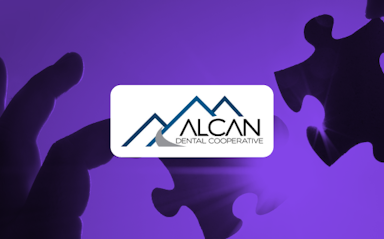Text 2 Pay: Drive Patient Payments Securely With Automated Texts
Managing overdue payments can be a huge challenge for dental practices. Patients often require more than three statements before they pay their bills. So it’s important for dental providers to have an effective patient payment collection strategy to reduce bad debt and protect their practice’s financial well-being. An effective way to drive timely patient payments is to send reminders via automated text communications.
What is Text 2 Pay (aka Pay by Text)?
Pay by Text, also known as an SMS payment, is a payment solution that allows consumers to pay via texting on their smartphones. With this payment method, you can send a text to your patient’s phone with a payment link and the option to respond to complete the transaction.
The practices will have their patient’s payment information on file, so they don’t have to worry about typing in their credit card information each time. This process creates a seamless experience for both your practice as well as for your patients.
Empower your patients to pay quickly with Text 2 Pay so that your dental practice will collect more and spend less time on collections.
How Dental Providers Use Automated Patient Communication to Drive Payments
There is a huge opportunity for dental providers to start incorporating text reminders into their patient payment collection strategy.
The same automated technology dental providers use to send appointment reminders can help practices connect with patients to pay their balance. It takes little effort to activate patient payments by sending a reminder text, helping practices collect patient payments faster.
Before appointments, send text messages that explain out-of-pocket costs.
Help patients understand what they will be required to pay for every dental or orthodontic service scheduled. The majority of patients say they usually don’t know the cost of a healthcare service until they receive the bill, but most Americans say they want to receive automated communications to help them understand what is and is not covered by their insurance.
To help reduce delays and confusion during the payment process, send pre-appointment messages that give patients advance notice that insurance may only cover a portion of the service being provided. Doing so helps patients know their financial obligations before their appointment and that they should expect to receive an online or mailed bill following the visit. Before their scheduled appointment, send patients a text stating the date and time of the appointment, as well as a reminder to be prepared to pay their copay upon arrival. The message may also encourage patients to discuss payment concerns with their dentist during the appointment.
Send texts notifying patients of approaching payment due dates.
Using your practice management system, your staff can pull a list of patients who have an approaching payment due date and then schedule an automated text reminder for anyone whose payment has not yet been received.
These text messages alert patients to approaching payment due dates and provide instructions for making an immediate one-time payment to avoid being late. Whether you want to provide a call-back number or direct them to your patient portal, patient payment reminders can communicate payment instructions in every outbound text message.
Make it easy for patients to pay.
Dental practices can send text messages with specific patient balance information and instructions for making a payment immediately.
Include links that allow patients to easily access your patient portal or call the practice directly to make a payment or discuss payment plans with the office staff.
Immediately engage patients with overdue accounts.
When patients don’t pay their bills on time—or at all—dental providers can experience cash flow problems and risks to their practice’s financial well-being. Automated text message communications are an easier and more effective way to encourage patients to make payments, helping dental practices collect more payments sooner, and reduce bad debt.
Benefits of Text 2 Pay
The major benefits of virtual payment systems are:
1. Convenience
Research suggests that most Americans owning mobile phones accept text messages as one of the most convenient channels for customer communication. Delivering this convenience to the bill payment process can encourage on-time and hassle-free transactions.
2. Speed
When a customer enrolls in Pay by Text, bill-ready notifications are sent directly to the mobile number they have provided. From there, the customer can reply with a text to initiate a bill payment from the funding source they established in their account.
A confirmation is texted back to the device, and the transaction is complete. Eliminating the need to open a browser or log in to a user account means a faster bill payment experience for both practices and patients.
3. Personalization
Customers must sign up for Pay by Text and provide information, including their mobile numbers, communication preferences, and payment funding methods, to complete the enrollment process. In doing so, a personalized experience can be delivered to them.
For example, customers can select how many days in advance they want to receive bill-ready alerts. Also, allowing customers to select when, where, and how these interactions take place can deliver an experience custom-tailored to their needs and preferences.
Incorporating technology in dentistry
A digital platform in dentistry means a digitized patient information system. Because of the real-time flow of information, the practice with a digital platform can operate more efficiently with quick delivery of processes and a higher level of productivity.
For example, with practice management software and digital imaging, you can share information instantaneously among multiple team members. Updates made by one staff member can be immediately accessed, which can reduce redundant tasks. Imagery and files can be instantly transferred to laboratories for a quick review in developing tooth replacements and dental apparatuses.
While the maximum capabilities of the digital office are still being explored, what is clear is that having the proper foundation in place is critical to ensuring the optimal functioning of the digital practice. These basics include dental chairs, dental furniture, integrated delivery systems, lights, and efficient sterilization systems, all in a clutter-free space that allows easy access and enhanced usability by staff members. When technology is implemented, you create a smooth environment where everything works together effortlessly to improve comfort for the patient and productivity for the practice.
Improving the patient experience
While a technology-based practice can provide many benefits on the business side, it’s just as important to concentrate on the patient factor.
Before making a major investment in new equipment, consider whether the technology will improve the patient experience. Will it require less chair time and enable shorter appointments?
Technology can also bring flexibility to the office schedule, helping doctors better accommodate their patients with extra hours.
With faster dental processes, it becomes much easier to squeeze in the patients who are available only during off-hours in the morning or evening or perhaps continue to meet the needs of existing patients while cutting back practice hours and creating more personal time for the doctor and staff.
Conclusion
Healthcare has long struggled to transform its patient experience into a consumer-friendly model. While trends like contactless payments and text-to-pay have been on the horizon even before the pandemic, we now know how important it is to adopt new ways that health systems can operate more efficiently.





